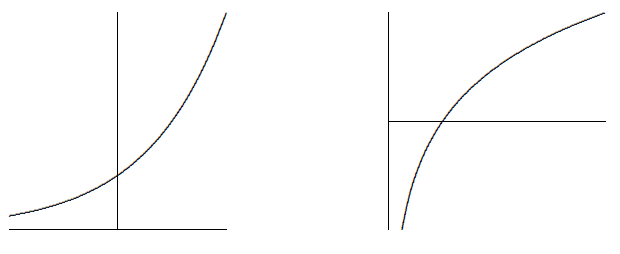3.8: Derivatives of Inverse Functions and Logarithms
( \newcommand{\kernel}{\mathrm{null}\,}\)
As with the sine, we do not know anything about derivatives that allows us to compute the derivatives of the exponential and logarithmic functions without going back to basics. Let's do a little work with the definition again:
There are two interesting things to note here: As in the case of the sine function we are left with a limit that involves
We earlier remarked that the hardest limit we would compute is
We can look at some examples. Consider
Two examples don't establish a pattern, but if you do more examples you will find that the limit varies directly with the value of
As you might guess from our two examples,
Now we see that the function
That is,
What about the logarithm function? This too is hard, but as the cosine function was easier to do once the sine was done, so the logarithm is easier to do now that we know the derivative of the exponential function. Let's start with
Consider the relationship between the two functions, namely, that they are inverses, that one "undoes'' the other. Graphically this means that they have the same graph except that one is "flipped'' or "reflected'' through the line

This means that the slopes of these two functions are closely related as well: For example, the slope of

More generally, we know that the slope of
Note that
Thus whether
What about the functions
The constant is simply
This is a perfectly good answer, but we can improve it slightly. Since
we can replace
You may if you wish memorize the formulas
Because the "trick''
Compute the derivative of
Solution
Compute the derivative of
Compute the derivative of
Recall that we have not justified the power rule except when the exponent is a positive or negative integer. We can use the exponential function to take care of other exponents.

